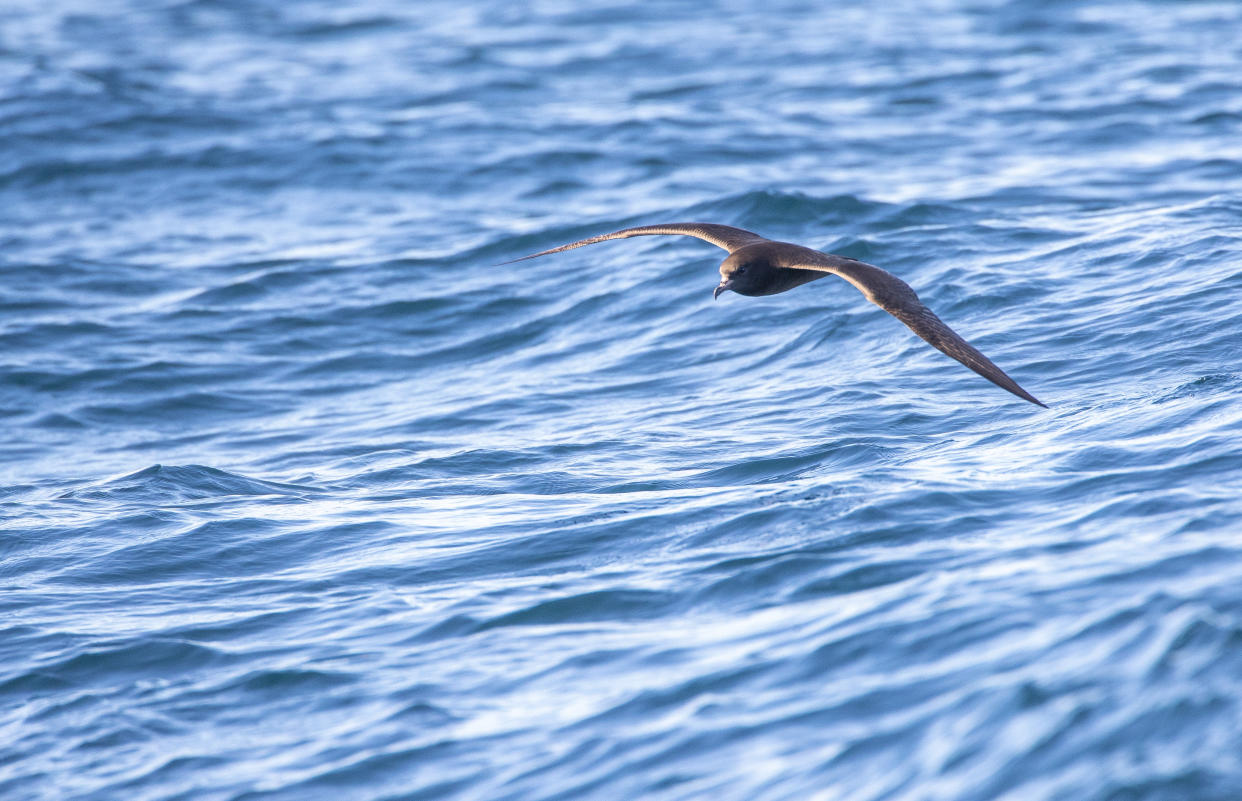Seabirds are falling ill with a new disease from eating plastic and it could affect humans

Seabirds are falling ill with a new disease caused by eating tiny pieces of plastic, researchers have warned.
The scientists say that 'plasticosis', which causes persistent inflammation inside birds, could affect many more species, and could even have an impact on human health.
Plasticosis is caused by small pieces of plastic that inflame the digestive tract.
Over time, persistent inflammation causes tissues to become scarred and deformed, with knock-on effects on growth, digestion and survival.
Dr Alex Bond, the principal curator and curator in charge of birds at the National History Museum, and who co-authored the study, said: "While these birds can look healthy on the outside, they're not doing well on the inside.
"This study is the first time that stomach tissue has been investigated in this way and shows that plastic consumption can cause serious damage to these birds' digestive system."
Read more: Melting snow in Himalayas drives growth of green sea slime visible from space
The research was published in the Journal of Hazardous Materials.
What is Plasticosis?
Plasticosis is a type of fibrotic disease. These conditions are caused by excessive amounts of scarring when an area of the body is repeatedly inflamed and prevents the wound from healing normally.
Generally, temporary scar tissue forms after an injury and helps to strengthen the repair.
But when inflammation happens again and again, excessive amounts of scar tissue can form that reduces the flexibility of the tissues and causes their structure to change.
The scientists discovered it as part of research on Lord Howe Island, where they have been studying seabirds for the past decade.
Despite the island being 600 kilometres off the east coast of Australia, the team has previously found that the flesh-footed shearwaters that live there are the most plastic contaminated birds in the world, as they consume pieces of plastic at sea after mistaking it for food.
Whilst studying the shearwaters, the scientists found that scarring of the proventriculus, which is the first chamber of the bird's stomach, was widespread and was causing similar wounds among the birds.
This consistency led to the team describing plasticosis as a specific disease.
Read more: A 1988 warning about climate change was mostly right
While this term was briefly used to describe the breakdown of plastic in joint replacements, its use was never common. As a result, they have brought the name back because of its similarity to other fibrotic diseases caused by inorganic materials, such as silicosis and asbestosis.
So far, plasticosis is only known to affect the digestive system, but there are suggestions it could potentially be affecting other parts of the body, such as the lungs.
Bond said: "The tubular glands, which secrete digestive compounds, are perhaps the best example of the impact of plasticosis.
"When plastic is consumed, these glands get gradually more stunted until they eventually lose their tissue structure entirely at the highest levels of exposure."
Losing these glands can cause the birds to become more vulnerable to infection and parasites, and affect their ability to absorb some vitamins. The scarring can also cause the stomach to become hardened and less flexible, which makes it less effective at digesting food.
"Our research team has previously looked at how microplastics affect tissues," Bond said. "We found these particles in organs such as the spleen and kidney, where they were associated with inflammation, fibrosis and a complete loss of structure."
Read more: Why economists worry that reversing climate change is hopeless
At the moment, plasticosis is only known in flesh-footed shearwaters. But given the amount of plastic pollution it's reasonable to assume that other species are also being affected by the disease.
The Journal of Hazardous Materials also cites recent research which says that people could potentially impact as well. "Due to the ubiquity of plastic and exposure to plastic from birth, it is likely human inhalation and ingestion of plastic is also inevitable," it says.
In 2021, a small study in China found that 52 people diagnosed with inflammatory bowel disease (IBD) had around 1.5 times the number of small plastic particles than those without any chronic illnesses
Plastic pollution
Plastic pollution now affects almost all species in the world's oceans, and is set to quadruple by 2050, a report by wildlife group WWF found last year.
That study found that 88% of marine species, from plankton to whales, are affected by contamination.
Pollution hotspots such as the Mediterranean, the East China and Yellow Seas, and the Arctic sea ice are already exceeding dangerous thresholds of microplastics.
The WWF report reviewed 2,590 studies and found that by the end of the century marine areas more than two and a half times the size of Greenland could exceed ecologically dangerous thresholds of microplastic concentration.
The amount of marine microplastic could increase 50-fold by then, the wildlife charity warned.
Watch: World producing record amount of single-use plastic


